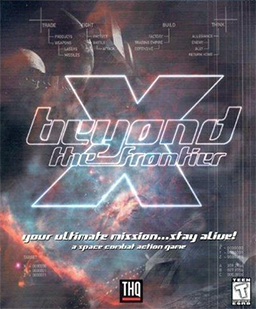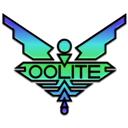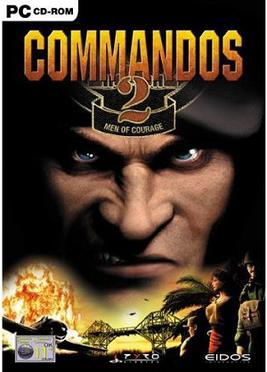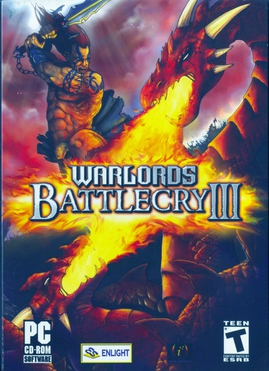
Elite is a space trading video game. It was written and developed by David Braben and Ian Bell and originally published by Acornsoft for the BBC Micro and Acorn Electron computers in September 1984. Elite's open-ended game model, and revolutionary 3D graphics led to it being ported to virtually every contemporary home computer system and earned it a place as a classic and a genre maker in gaming history. The game's title derives from one of the player's goals of raising their combat rating to the exalted heights of "Elite".
Egosoft GmbH is a German video game developer based in Würselen, Germany. The company was founded by Bernd Lehahn in 1988.

UFO: Enemy Unknown, also known as X-COM: UFO Defense in North America, is a 1994 science fiction strategy video game developed by Mythos Games and MicroProse. It was published by MicroProse for DOS and Amiga computers, the Amiga CD32 console, and the PlayStation. Originally planned by Julian Gollop as a sequel to Mythos Games' 1988 Laser Squad, the game mixes real-time management simulation with turn-based tactics. The player takes the role of commander of X-COM – an international paramilitary and scientific organization secretly defending Earth from an alien invasion. Through the game, the player is tasked with issuing orders to individual X-COM troops in a series of turn-based tactical missions. At strategic scale, the player directs the research and development of new technologies, builds and expands X-COM's bases, manages the organization's finances and personnel, and monitors and responds to UFO activity.

Nexus: The Jupiter Incident is a science fiction themed real-time tactics computer game developed by the Hungary-based Mithis Entertainment and published by HD Interactive. The game focuses on tactics and ship management instead of resource collection and base construction.

Vega Strike is a first-person space trading and combat simulator, developed for Microsoft Windows, Linux, FreeBSD and OS X systems. Many of the core game mechanics of Vega Strike are indirectly inspired by Elite. Other games, such as Wing Commander: Privateer, influenced the original developer.

Starlancer is a space-based science fiction flight simulator computer game, created by Erin and Chris Roberts, and developed by Warthog Games under the auspices of Digital Anvil.

X: Beyond the Frontier is a video game created by Egosoft for Windows. The first of the X series, it is a space trading and combat simulator game, mostly set in the fictional X-Universe. Upon release, it was frequently compared to the older Elite.

X3: Reunion is a single-player space trading and combat video game developed by Egosoft and published by Deep Silver. It is the third installment in the X series and the sequel to X2: The Threat (2003), which in turn followed X: Beyond the Frontier (1999). X3: Reunion was released originally for Windows in 2005. The game was later ported to Mac OS X and Linux.

Disciples II: Dark Prophecy is a 2002 turn-based strategy game by Strategy First for Microsoft Windows. It is the sequel to the 1999 game Disciples: Sacred Lands, and has become significantly more successful in terms of both sales and popularity than its predecessor. A collector's edition version of the game was released, which included a card game based upon the story and five extra quests.

Oolite is a free and open source 3D space trading and combat simulator "in the spirit of" Elite, a similar game published in the 1980s. The name is a contraction of object oriented Elite, because it was written in Objective-C, an object-oriented programming language. Among Oolite's several similarities to its source, the gaming experience is enhanced by the context set in Elite's original manual, and the accompanying novella, The Dark Wheel. Oolite is licensed under GPL-2.0-or-later for the source code, while resources are dual-licensed under GPL-2.0-or-later and CC BY-NC-SA-3.0.

Commandos 2: Men of Courage is a real-time tactics video game, developed by Pyro Studios, published by Eidos Interactive, and released on September 20, 2001. It is a sequel to Commandos: Behind Enemy Lines and the second installment of the Commandos series, and is the only strategy game of the series to be designed not only for Microsoft Windows, but also for PlayStation 2 and Xbox. The game sees players taking control of a squad of commandos, along with various allied units, as they sneak behind enemy lines to accomplish various missions in World War II, between 1941 and 1944, that will help them to thwart the war efforts of the Germans and the Japanese. The game features several improvements to the gameplay from its predecessor, including the ability to use enemy weapons and explore interior locations, the inclusion of three new commandos, a number of new skills for the original six members along with their other abilities, and new pieces of equipment to help overcome the enemy.

Legion Arena is a computer wargame developed by Slitherine Strategies. It allows the player to play as several tribes during the rise of the Roman Empire. The player can play as the Latin tribes, the Celts and the Romans. It is published by Black Bean Games in Europe and Strategy First in North America for Windows.
X is a science fiction space trading and combat simulator series created by German developer Egosoft. The series is set in the X-Universe where several races populate a number of worlds connected by jumpgates.

Warlords Battlecry III is a real-time strategy game developed by Infinite Interactive and published in 2004. It is the third installment in the Warlords Battlecry series and the sequel to Warlords Battlecry II.

X3: Terran Conflict is a space trading and combat simulator by German developer Egosoft, part of their X series of games. Described as a stand-alone game, based on X3: Reunion, it boasts new plot lines, features and assets. It was first released in October 2008 for the European market and Steam.
A space flight simulation is a genre of flight simulator video games that lets players experience space flight to varying degrees of realism. Common mechanics include space exploration, space trade and space combat.

X Rebirth is a single-player space trading and combat game developed by Egosoft, published by Deep Silver (Europe) and Tri Synergy (America). It is the sixth installment in the X universe adventure video game series, following X3: Albion Prelude (2012), as the new sequel to the last game title. The game runs on Linux, macOS and Microsoft Windows. Egosoft director Bernd Lehahn has stated that X Rebirth will not be available on consoles.

Starbound is an action-adventure video game developed and published by Chucklefish. Starbound takes place in a two-dimensional, procedurally generated universe which the player is able to explore in order to obtain new weapons, armor, and items, and to visit towns and villages inhabited by various intelligent lifeforms. Starbound was released out of early access in July 2016 for Windows, OS X, and Linux, and for Windows via Xbox Game Pass in December 2020.

Space Hulk is a turn-based tactics video game developed by Danish studio Full Control. It is based on the tabletop game of the same name by Games Workshop. It features the Blood Angels Chapter of the Space Marines battling grotesque aliens known as Genestealers. A follow-up game, Space Hulk: Ascension, was released in 2014.

Star Trek: Bridge Crew is a virtual-reality action-adventure video game developed by Red Storm Entertainment and published by Ubisoft for Microsoft Windows, PlayStation 4, and Oculus Quest.


















